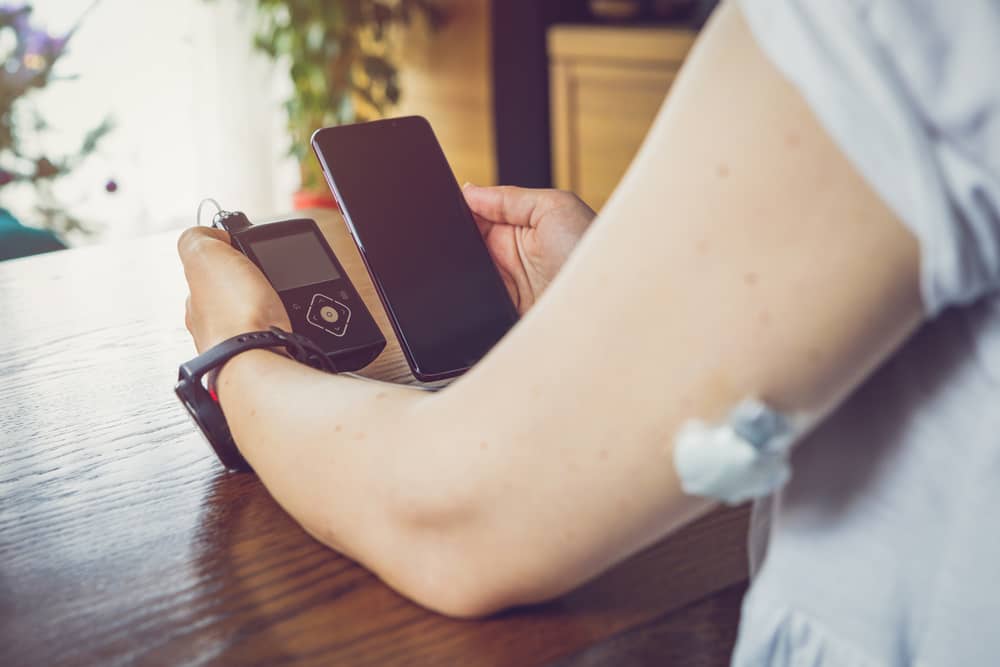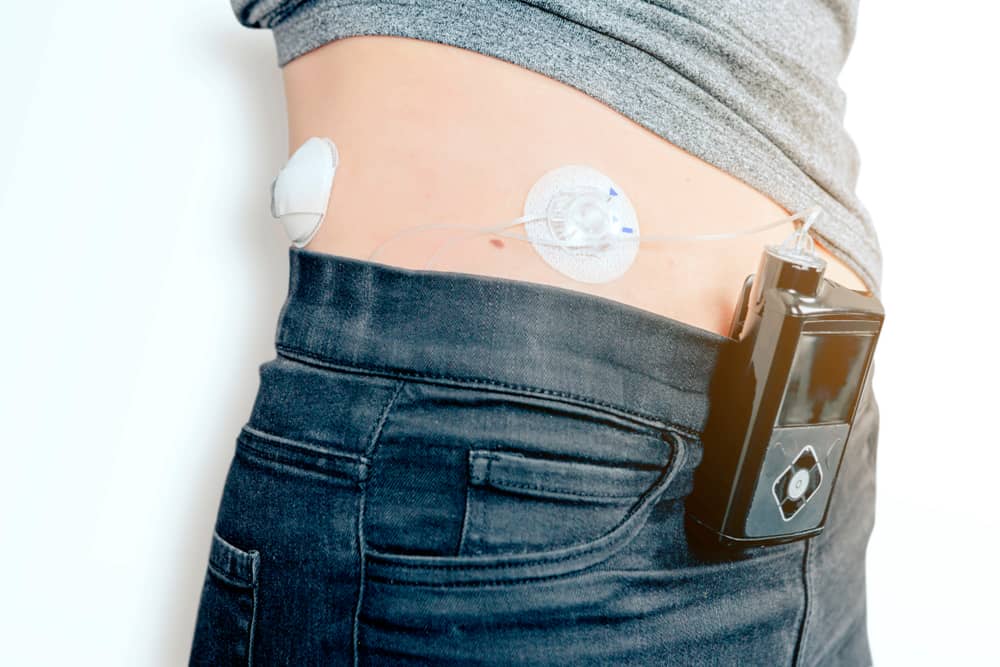Artificial Pancreas
On this page:
- What is an artificial pancreas?
- How do artificial pancreas systems work?
- Are there other names for the artificial pancreas?
- What are the different types of artificial pancreas systems?
- Who can use an artificial pancreas?
- What are the benefits of an artificial pancreas?
- What are the limits of an artificial pancreas?
- How does NIDDK support artificial pancreas research?
- Clinical Trials for the Artificial Pancreas
What is an artificial pancreas?
An artificial pancreas is a system made of three parts that work together to mimic how a healthy pancreas controls blood glucose, also called blood sugar, in the body. An artificial pancreas is mainly used to help people with type 1 diabetes.
In type 1 diabetes, the pancreas does not produce insulin. People with type 1 diabetes control their blood glucose level by checking it and taking insulin, either by injection or through an insulin infusion pump, several times a day. An artificial pancreas automatically monitors your blood glucose level, calculates the amount of insulin you need at different points during the day, and delivers it.
Most artificial pancreas systems require you to count and enter the amount of carbohydrates you consume at mealtime. These are called “hybrid” artificial pancreas systems, because some of the insulin is given automatically and some is given based on the information you enter. These systems help control blood glucose levels throughout the day and night, making it easier for people with type 1 diabetes to keep their blood glucose level in range. Keeping blood glucose levels in range will prevent other health problems from developing and may improve daily life for people with type 1 diabetes.
How do artificial pancreas systems work?
Three devices make up an artificial pancreas system.
-
A continuous glucose monitor (CGM) tracks blood glucose levels every few minutes using a tiny sensor that is inserted under the skin. The sensor wirelessly sends the information to a program stored on a smartphone or on an insulin infusion pump.
-
The program calculates how much insulin is needed and signals the insulin infusion pump when insulin needs to be delivered.
-
The insulin infusion pump will deliver small doses of insulin throughout the day when blood glucose levels are not in your target range. There are different types of insulin pumps.
- One type of pump is worn outside the body on a belt or in a pocket or pouch. Insulin flows from the pump through a plastic tube that connects to a smaller tube, called a catheter, which has a needle that is inserted under the skin and stays in place for several days.
- Another type of pump attaches directly to the skin with an adhesive pad and gives insulin through a catheter inserted under the skin. This kind of pump is replaced every few days.

 An artificial pancreas system uses a continuous glucose monitor, an insulin pump, and a program stored on the pump or a smartphone (top). The insulin pump can be worn on a belt, stored in a pocket, or attached directly to the skin (bottom).
An artificial pancreas system uses a continuous glucose monitor, an insulin pump, and a program stored on the pump or a smartphone (top). The insulin pump can be worn on a belt, stored in a pocket, or attached directly to the skin (bottom).
Are there other names for the artificial pancreas?
Other names for the artificial pancreas include
-
automated insulin-delivery system
-
closed-loop system
-
bionic pancreas
What are the different types of artificial pancreas systems?
There are several types of artificial pancreas systems. They include-
threshold suspend and predictive suspend systems
-
insulin-only systems
-
dual hormone systems
Threshold suspend and predictive suspend systems
The threshold suspend and predictive suspend systems can temporarily stop or “suspend” delivering insulin if your blood glucose level gets low.1
The threshold suspend system stops delivering insulin when your blood glucose level drops to a pre-set level. The predictive suspend system calculates your blood glucose level and will stop delivering insulin before your blood glucose level gets too low. Neither system automatically increases insulin doses.
Stopping insulin delivery at the right moment can help a person with type 1 diabetes avoid low blood sugar, or hypoglycemia, a condition when a person’s blood glucose level is lower than their target range. These systems may help people with type 1 diabetes who develop hypoglycemia overnight, particularly children.
Insulin-only systems
Insulin-only systems keep your blood glucose level within your target range by automatically increasing or decreasing the amount of insulin delivered to your body based on your CGM values. Insulin-only systems can increase insulin doses if your blood glucose level is higher than your target range.
One type of insulin-only system is the hybrid system. The hybrid insulin-only system automatically adjusts insulin doses in response to your CGM values. But you must still count carbohydrate levels and calculate insulin doses for all meals and snacks.
Dual hormone systems
Researchers are currently developing and testing systems that use two hormones—insulin to lower glucose levels and glucagon to raise blood glucose levels. Using two hormones to control blood glucose is similar to the way the pancreas works in people who do not have diabetes. These systems may be able to tightly control glucose levels without causing hypoglycemia. Researchers are also testing how well other combinations, such rapid-acting insulin and pramlintide, can control blood glucose levels.2
Who can use an artificial pancreas?
You need a prescription from your doctor to get an artificial pancreas. Together, you and your doctor will consider which system can best control your blood glucose levels and fit your lifestyle. Other factors to consider are
-
age—some models are approved for children as young as 2 years old, while others are approved for people ages 6 years and older
-
whether you can place the devices in the correct position without help, check that they are working properly, and adjust them or enter carbohydrate data as needed
-
whether you prefer an insulin pump with tubing or one that attaches directly to your skin
-
whether you have access to a Wi-Fi network so that information can flow between the parts of the system
Parents or guardians of children with type 1 diabetes should talk about appropriate artificial pancreas systems with the child’s doctor.
Researchers continue to develop new and different types of artificial pancreas systems that will meet the needs of people with type 1 diabetes and other types of diabetes.
How much an artificial pancreas will cost you depends on your health insurance provider. Private insurance plans or government plans may not cover all artificial pancreas systems available for people with type 1 diabetes. More information on how to pay for type 1 diabetes devices and medicines is found in Financial Help for Diabetes Care.
What are the benefits of an artificial pancreas?
An artificial pancreas may help people with type 1 diabetes reach their target blood glucose levels and improve their quality of life.
With an artificial pancreas system, your glucose levels will be monitored continuously. The computer program improves blood glucose control by automatically adjusting the amount of insulin it delivers to keep your blood glucose levels in range. The system helps you avoid hypoglycemia and hyperglycemia.
Doctors can monitor insulin doses remotely and recommend dosage adjustments for people who need closer supervision. Also, parents or guardians can monitor blood glucose levels from their own smartphones throughout the day and night.
What are the limits of an artificial pancreas?
Artificial pancreas systems are not completely “hands off.” You have to regularly maintain the devices to be sure they are working properly and enter meal sizes into the system every time you eat. You will also need to
-
check the CGM and infusion pump catheter to be sure they are in place and change them when needed
-
check the CGM for accuracy and replace the CGM sensor from time to time
-
count the amount of mealtime carbohydrates and enter them into the system
-
adjust the computer program settings to make sure you get the right amount of insulin to keep your blood glucose level in your target range
-
reboot or reconnect the CGM, infusion pump, and computer program if there are problems
-
manage high or low blood glucose levels if the system is not able to keep your blood glucose in range
The adhesive patches used with these systems may cause skin redness or irritation. Some medicines you take might also interfere with the glucose monitor.
How does the NIDDK support artificial pancreas research?
For more than 20 years, the NIDDK has funded technology to improve the lives of people with type 1 diabetes. Together with other federal government agencies and partner organizations, the NIDDK works to advance blood glucose monitoring, automate insulin delivery, and decrease complications of living with type 1 diabetes.
The NIDDK supports clinical trials to test artificial pancreas systems for children,3 adolescents,2,4 and adults4 with type 1 diabetes. New trials will test artificial pancreas systems in larger groups of people over longer periods of time.
Recent clinical trials funded by the NIDDK have shown that artificial pancreas systems control blood glucose levels better than other methods, especially through the night—a challenge for many people with type 1 diabetes—and in children as young as 6 years old. Researchers continue to improve the design and components of artificial pancreas systems and to expand their use in different age groups and in real-life situations, such as during exercise.
Clinical Trials for the Artificial Pancreas
The NIDDK conducts and supports clinical trials in many diseases and conditions, including diabetes. The trials look to find new ways to prevent, detect, or treat disease and improve quality of life.
What are clinical trials for artificial pancreas?
Clinical trials—and other types of clinical studies—are part of medical research and involve people like you. When you volunteer to take part in a clinical study, you help doctors and researchers learn more about disease and improve health care for people in the future.
Researchers are studying many aspects of artificial pancreas systems, such as
-
computer programs that improve blood glucose monitoring and insulin delivery during daily activities and mealtimes
-
different types of artificial pancreas systems (insulin-only or dual hormone)
-
different types of insulin that can be used in these systems
-
artificial pancreas systems that can be used by different age groups, such as older adults and very young children
Watch a video of NIDDK Director Dr. Griffin P. Rodgers explaining the importance of participating in clinical trials.
What clinical studies for artificial pancreas are looking for participants?
You can view a filtered list of clinical studies on the artificial pancreas that are open and recruiting at ClinicalTrials.gov. You can expand or narrow the list to include clinical studies from industry, universities, and individuals; however, the National Institutes of Health does not review these studies and cannot ensure they are safe. Always talk with your health care provider before you participate in a clinical study.
References
This content is provided as a service of the National Institute of Diabetes and Digestive and Kidney Diseases
(NIDDK), part of the National Institutes of Health. NIDDK translates and disseminates research findings to increase knowledge and understanding about health and disease among patients, health professionals, and the public. Content produced by NIDDK is carefully reviewed by NIDDK scientists and other experts.
The NIDDK would like to thank:
Steven J. Russell, M.D., Ph.D., Harvard Medical School, and Courtney Balliro, R.N., CDE, Massachusetts General Hospital

